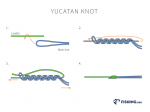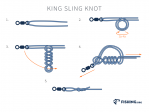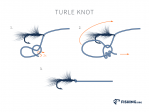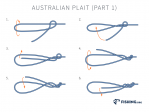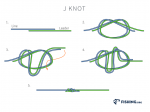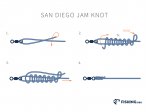Davy Knot
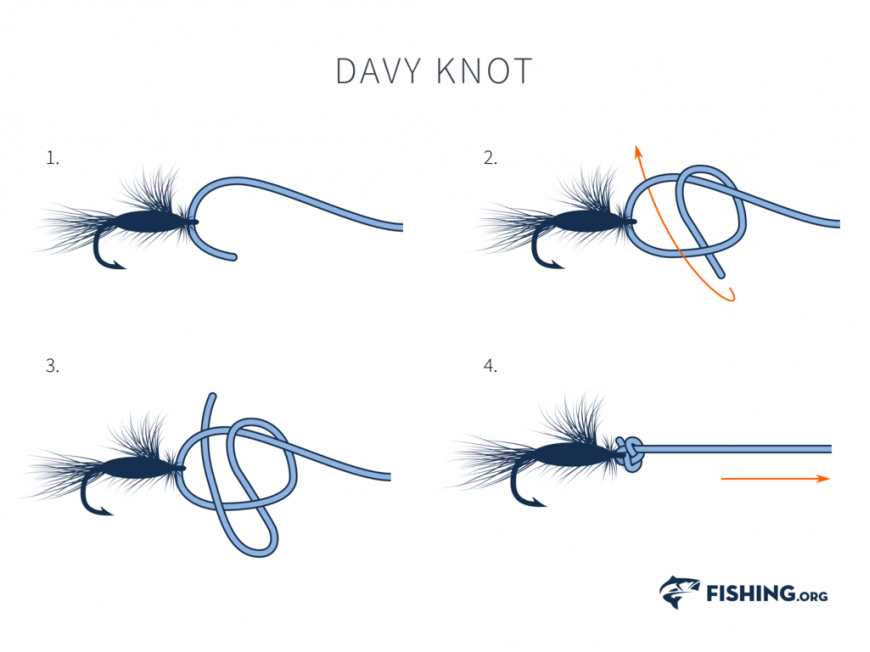
The Strong and Effective Davy Knot
The attributes of the Davy Knot are its size, speed and strength. Once you get the knack of it the Davy Knot can be tied very quickly which means that you can save a lot of time normally lost due to tying your knot. This is also a very ideal knot for small flies. Tests have even proven that it has been rated between 85 to 100 percent of line strength. The Davy Knot is a great go-to knot for fly fishing.
Step 2:
Step 3:
Step 4:
Our Take:
The creation of the Davy Knot came about in the 1950s. It is a fishing knot that represents the name of its British creator, Davy Wotton. The connection is clear.
Davy Knot is small, versatile, and easy to learn. With a little practice, it does not take long to know how to tie this knot.
Because of how easy it is to manipulate, the Davy Knot is a favorite fishing knot to use in Welsh international Fly-fishing competitions as it is also powerful.
The Purpose of the Davy Knot
The invention of the Davy Knot resulted from Davy Wotton aspiring to create a knot that he could tie quickly. The knot’s purpose evolved from him wanting to tie fewer knots and more time catching fish.
This time-saving knot resonates with anglers all over the world. No fishermen or women who are saltwater fly-fishing want their time wasted on tying knots and not fishing.
When to Use the Davy Knot
To ensure the knot holds and does not cause your catch to slip off the lure, you want to use the right fishing line and bait. You will want to prevent knot slippage and breakage.
Anglers should use a braided line with the Davy Knot, and it is ideal to use with small flies.
Most use the Davy Knot because of how easy and quick it is to tie. It wastes no material, and it has a small profile that allows for more movement of the fly.
Experiments show its rating lands between 85 and 100 percent of the line's strength.
The Davy knot will break at an average power of 31.6 lbs of pressure. But it cannot match the strength of the Orvis Knot in terms of strength.
The Orvis also leaves a tag end that points back towards the hook/lure, which makes it less likely to snag onto any floating debris.
With the Davy Knot being tiny, it makes it perfect to use in still water, or whenever trout are being selective.
Davy Knot is a great go-to knot for fly-fishing.
Fishing Tip: You also want to look closely at how well the knot is tied. If that looks correct, try the double knot version of the Davy Knot.
How to Tie a Davy Knot
The Davy Knot is a figure 8 type knot. You can tie a Davy knot in less time than it takes to tie a clinch knot.
- Thread 3 to 4 inches (10.16 cm) (or tippet material) through the hook eye.
- Just ahead of the hook, create a loose and simple overhand knot.
- Bring the end back through the loop as you pass between the knot and the hook.
- Lighten the knot by pulling on the tag at the tag end. Draw the knot before the mainline to set the knot.
How to Tie a Double Davy Knot
The Double Davy Knot is becoming a popular and favorite knot with fly fishers because it is effortless to tie while having impressive knot strength. It leaves a tiny knot, which helps ensure that fish cannot see it.
6 Steps to Tying The Double Davy Knot:
- Thread the fly line through the lure/hook eye.
- Pull out ~4 inches (10.16 cm) of tag end, and curve it around the mainline from behind.
- Thread the tag through the loop knot from the front.
- Wrap the tag end around the loop and thread it through from the front again.
- Repeat step 4 from the opposite side.
- Pull the knot to create a tight line and then cut off the tag.
The Double Knot version will immediately improve the monofilament or fluoro line strength.
Conclusion
Whether you use a Davy Knot or Double Davy Knot, you want to deal less with challenging fly knots and more time fishing. It is one of the best knots to use on your fly rod. It is a fly-fishing knot with impressive breaking strength and how easy it is to tie.
 Carla Arbuckle
Carla Arbuckle 
